14 Things To Know About Spain Before You Go: People, History, Food and more!

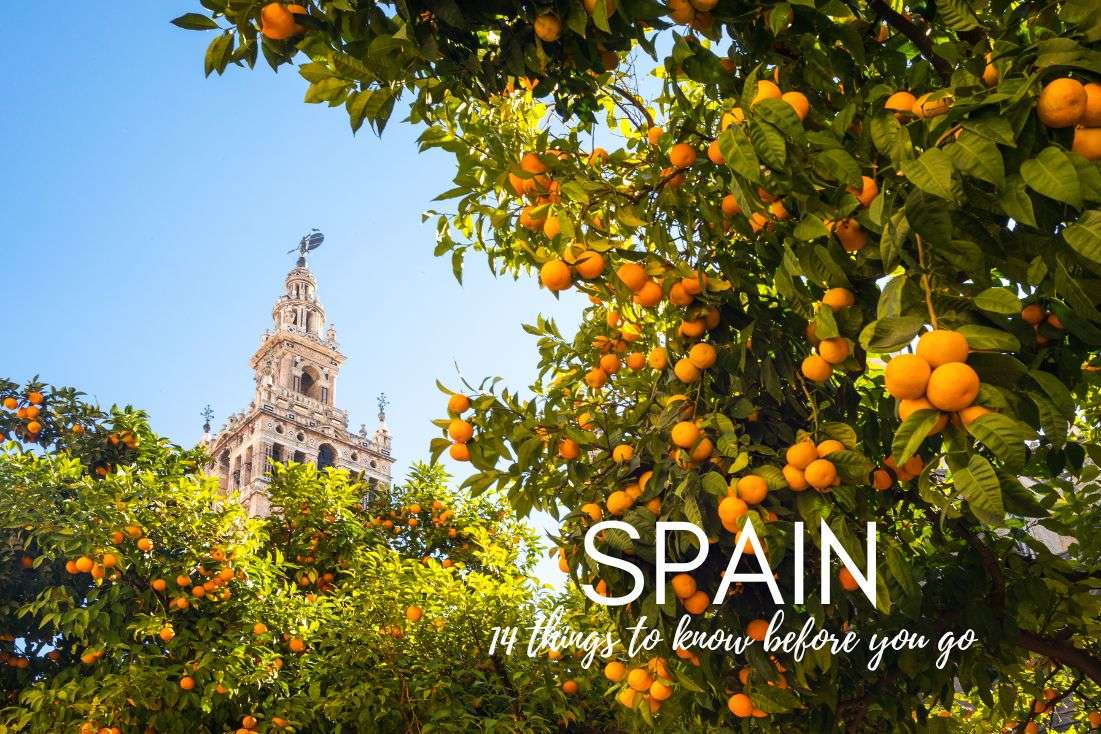
Can tell the difference between jamon and a chorizo? What about Andalusia and Catalonia? Let's get you up to speed on your Spain knowledge so you can visit the country not looking like a tourist fool.
You might also be interested in reading:
- Andalusia Itinerary: Southern Spain in 10 Days
- Barcelona Itinerary: 5 days in Gaudí’s Metropole (with day trips)
- All You Need to Know about Spanish Tapas (+Restaurant Tips)
- The 10 Best Museums in Spain’s Top Cities
- The 16 Most Beautiful Beaches in Spain
1. Spain Government and Geography
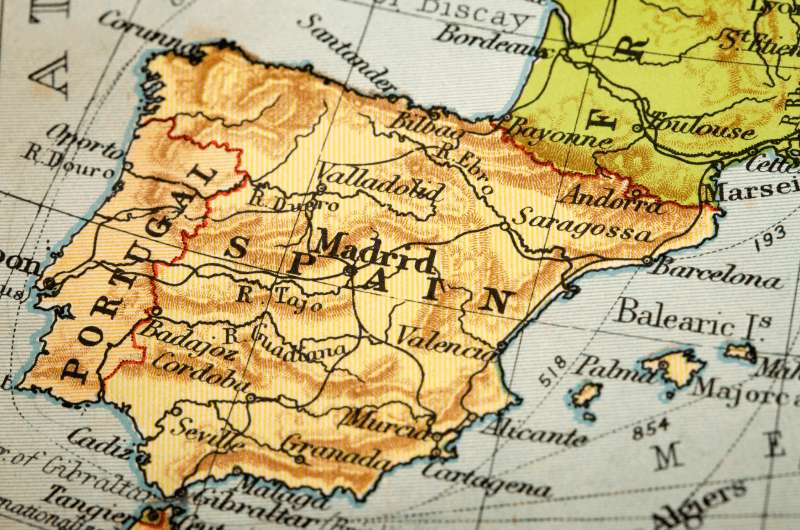
This is Spain. Geographically
Spain, officially the Kingdom of Spain, Reino de España in Spanish, is a country on the far west of Europe (like you didn’t know).
It also includes the Balearic Islands in the Mediterranean Sea and the Canary Islands in the Atlantic Ocean off Africa (Morrocco and West Sahara), plus the teeny tiny semi-enclaves of Ceuta and Melilla and the exclave Peñon de Vélez, all in northern Africa. Yes, there is Spain in Africa!
Mainland Spain occupies 85% of the Iberian Peninsula (with 15% taken up by Portugal).
It is washed by the Mediterranean Sea on the east and the Atlantic Ocean on the west. The waters of the two merge together in the south of Spain in the Strait of Gibraltar. That’s where the coast of Africa is only 13 kilometers (8 miles) away from Europe. All these bodies of water surrounding Spain give its whopping 4,964 kilometers (3,000 miles) of coastline. That’s a lot of beaches!
With an area of over half a million square kilometers (200,000 square miles), Spain is about the size of France or Thailand. Together they hover around 50th place in the list of countries of the world by size. Interestingly though, Spain has about 20 million less people than both France and Thailand—about 47 million.
Overall, Spain is very mountainous, with a large plateau in the central part and mountain ranges all around it. The interior of Spain is very dry, though rivers do run through it to the sea, creating good farming conditions (for plants that don’t need too much water and love sunshine). Expect to see a lot of olive trees. Droughts are common.
The mountains rarely feel very high, even though the highest peak, Mulhacén near Granada, reaches 3478 meters (11,000 feet). This is likely because Spain’s average altitude is the second highest in Europe—about 600 meters (2000 feet). Only Switzerland has a higher average.
Tip: Book your hotel in Spain here.
2. Political System of Spain
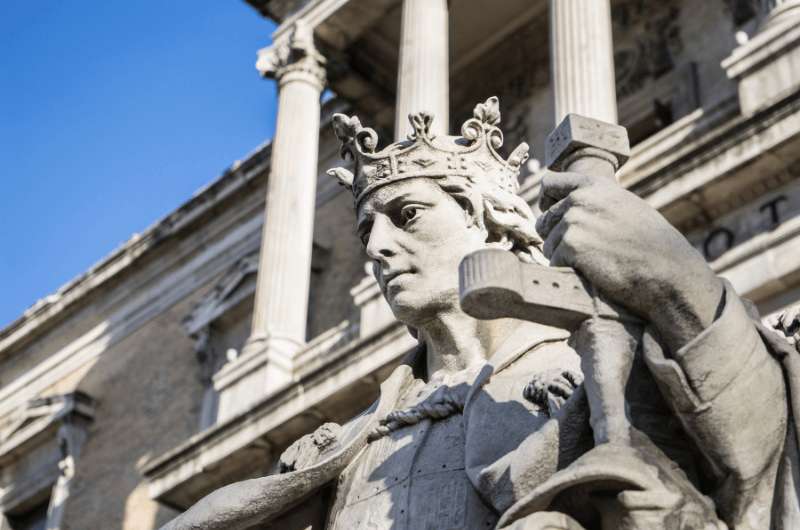
Constitutional monarchy and parliamentary democracy
Spain is a constitutional monarchy and parliamentary democracy. That means they have a king that can't do much on his own, because the real power lies with the parliament. The current monarch is King Felipe VI, who is the head of state and the commander-in-chief. As mentioned, he does not have executive power, but they like to keep him feeling special by frequently consulting with him on his opinion. Then they do whatever they want anyway.
The parliament consists of the Congress of Deputies and the Senate. Most government departments are based in Madrid, the capital, with the official headquarters in the Palace of Moncloa, outside of Madrid. Spain’s constitution is from 1978, when Spain officially became a democratic country.
Spain has been part of the European Union since 1986.
3. Spain’s Regions
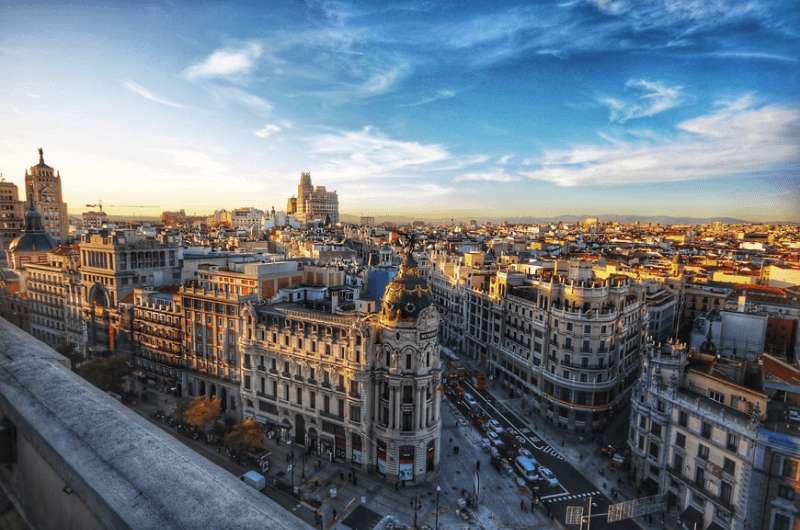
Madrid
Though a unitary state, the country has 17 autonomous regions, each divided further into provinces. Each of these regions has its own culture and even their own local language. These regions are:
- Andalusia: The southernmost region that most tourists picture when they think of Spain. It has beaches, flamenco and Moorish architecture and the most devout Catholics.
- Basque Country: Bordering France, a small but very independent region with its own flag and a language that pre-dates the Roman times. Great museums in Bilbao.
- Catalonia: Another fiercely independent region, very popular with tourists, best known for its capital, Barcelona.
- Valencia: A region in the east that runs along the Mediterranean cost, right below Catalonia, known for good food (paella was born here). Valencia is one of the oldest cities in Spain.
- Madrid: The country’s capital has its own region. To make it feel special, just like the king.
- Aragon: A landlocked region close to the French border with many ski resorts.
- Asturias: Beaches of Costa Verde and hiking in Picos de Europa.
- Cantabria: Beaches of Costa Verde and the cave paintings at Altamira.
- La Rioja: A tiny region under Basque country with over 500 vineyards.
- Navarre: Mostly hills and mountains, known for the bull run in Pamplona. East of Basque Country.
- Castilla La Mancha: A region in the center of Spain, sparsely populated, arid, some vineyards, close to Madrid.
- Galicia: In the north-west above Portugal, very culturally and scenically different than the more popular south. A great 1500km coastline full of fjords and coastal inlets.
- Castilla and Leon: The country’s largest region, bordering Portugal, surrounded by mountains so not the most comfortable to get to.
- Extremadura: In the south-west above Andalusia, some call it a hidden gem for its historic towns and natural beauty (lakes, mountains and forests).
- Murcia: In the south east with great beach life year round. Also, if you want to dive off the mainland, dive here.
- Balearic Islands: Mallorca, Menorca, Ibiza and Formentera in the Mediterranean Sea.
- Canary Islands: The volcanic islands of Tenerife, Lanzarote, Fuerteventura and Gran Canaria are well known, but there are actually 13 islands in this group. West of Africa, next to Morocco and West Sahara.
What about the enclaves in Africa? Melilla and Ceuta were conquered by Spain in the 15th and 17th centuries, and Spain retained them even after Morocco became independent in 1956. Morocco is not happy about this, claiming that it is their territory that is being occupied by Spain. To this day, Morocco is very sour about these two itty bitty Spains on "their" land. There are incidents here and there where Moroccans try to illegally enter the enclaves and then point out that this shouldn’t be seen as migration since they are still on Moroccan soil.
Another pain point are the walls and fences that surround Melilla and Ceuta. Historically, there have always (or since they were conquered) been walls around the cities. Even Moroccans have accepted that by now. What brings up new emotions though, is when Spain starts to renovate those walls or builds new fences. It’s like waving a red cape in front of a bull!
Peñón de Vélez de la Gomera is a tiny, rocky tied island with only a few buildings on it and is only populated by a small number of Spanish military personnel.
4. Money in Spain
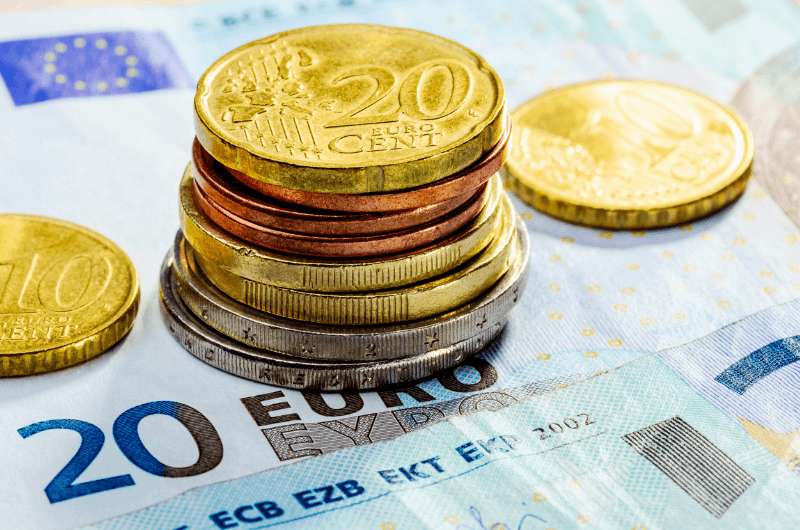
You will need euro for your trip to Spain
Spain’s currency is the Euro.
Cash is still the preferred form of payment, but cards are accepted in most places in cities especially. Do not expect to pay with your card in small shops. If paying with a card, you will most likely be asked to insert it and enter a PIN and then sign the receipt. Very old-school. If contactless payments are available, there is a 20 Euro limit on them.
If you are paying in cash, you will notice nobody really ever has proper change, so don’t think you’re rich carrying around a bunch of 50 euro bills – you will be laughed at, turned away, and left feeling very poor with your useless chunks of cash.
ATMs are plentiful in bigger cities, but definitely not in villages and rural areas. ATM fees vary widely. Just carry cash.
If you need to go to a bank, remember that they close early, around 2pm. They take their siesta and then never come back, so plan your visit for the morning.
Tip: Book your hotel in Spain. You know you want to go!
5. Spain History
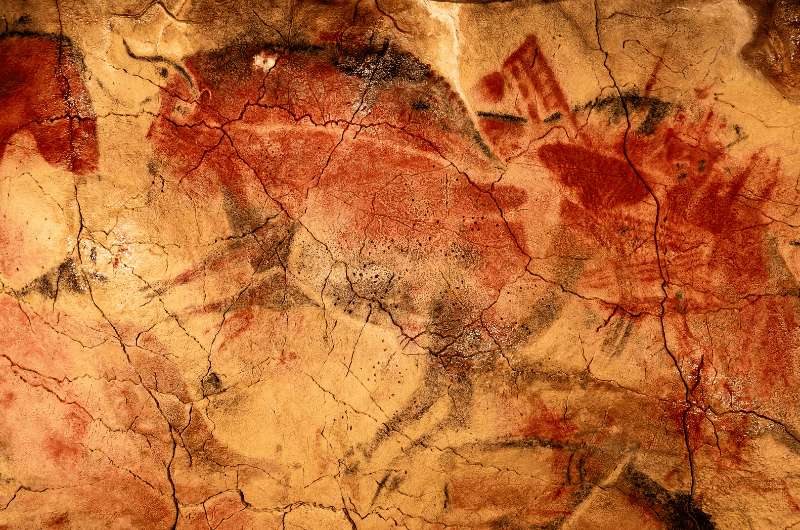
Altamira cave
Spain’s history is like a centuries-long game of hot potato – from the Phoenicians and the Romans and the Visigoths to the Muslims, the Christians and France and a dictator, a lot has happened in Spain! All of these chapters in Spain’s history have left their mark, enriching Spain’s cuisine, art, and customs and making it the colorful country it is today. But unless you are a history buff, it can be quite mindboggling. So let’s try to untangle this mess.
How far back do you want to go? The earliest proof of hominids in Western Europe – a tool – was found in a Spanish cave (Atapuerca) and dated to 1.4 million years ago. If we’re talking about actual human settlements, there was art found in the caves of Altamira that is from about 15000 BC.
There are many tribes native to the Iberian peninsula – the Phoenicians, Carthaginians, Greeks, Celts and others, all establishing trading settlements in what is now Spain.
However, the very first tribe were actually the Basques. They got to Spain before any other Indo-European tribe and it’s pretty much a miracle that their language (that has nothing to do with any other language in Spain) survived until today.
The Romans
In about 200 AD, the Romans took over and six centuries of Roman occupation followed. Understandably, the Romans had a huge impact on everything from language (they unified the 200 dialects of different tribes with Latin) and infrastructure to trade, troops, construction of many cities according to the roman model.
Likewise, Spain also impacted Rome. For example, food, olive oil, wine and some metals were supplied to Rome from Spain. Many Roman VIPs were born in Spain – emperors such as Trajan and Hadrian, or the philosopher Seneca and the poet Lucan. All from the Iberian Peninsula! The strong patriarchal model of Roman society also led to the (cringeworthy) phenomenon of machismo which is often associated with Spain and Latin American cultures. Male power, baby!
Along with the Romans, there were many barbaric tribes on the peninsula that basically contributed to the fall of Roman reign in the area. During the 5th century AD, the Visigoths took over and it was a complete chaos honestly, which made it easy for the tribes from Islamic countries to conquest Spain. When they invaded the country, Christian groups (mainly nobles) fled to the north.
Islamic reign
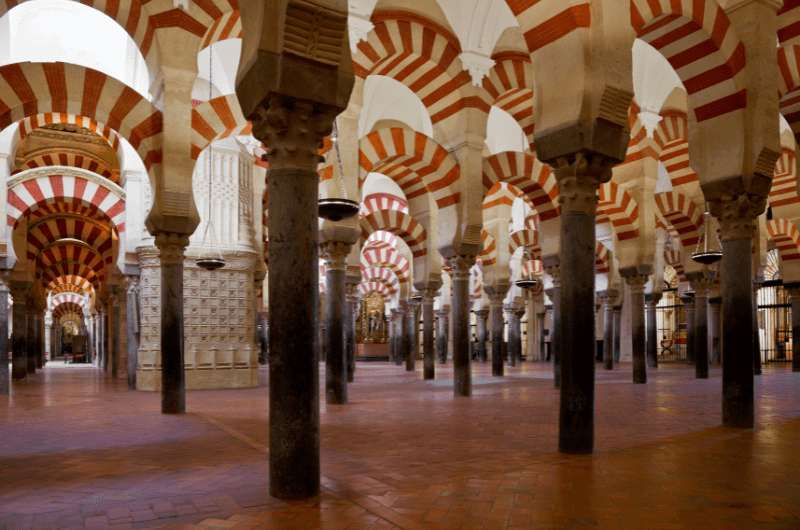
Mosque-cathedral of Córdoba
Islamic reign over Spain lasted from 711 to 1492. As you might expect, it was not a nice, quiet rule during which the country could finally relax after centuries of back and forth. The Christians weren’t happy about the Muslims and vice versa, and so, for the entire 700 or so years, they fought about who gets what, pushing the border between the two back and forth.
Since the Muslim conquerors, who were known as Moors, came from the south, the southern parts of today’s Spain are most influenced by them. During almost 800 years, there were three big groups that lived together in the cities of the peninsula: the Muslims, the Christians and the Jews. In all the towns and cities in Andalusia, the southernmost province of Spain, you will notice their separate quarters, plus you get to see how the different influences merged and combined. This is probably most apparent in the mosque-cathedral of Córdoba. Yes, part mosque, part cathedral, it’s literally a fusion of both. Pretty cool actually (not sure what Christians and Muslims make of it though).
The Christians eventually succeeded in expelling the Moors in 1492, which is a year that may sound familiar – as it's the exact same year when Christopher Columbus ended up in America. This is not a coincidence.
The Catholics
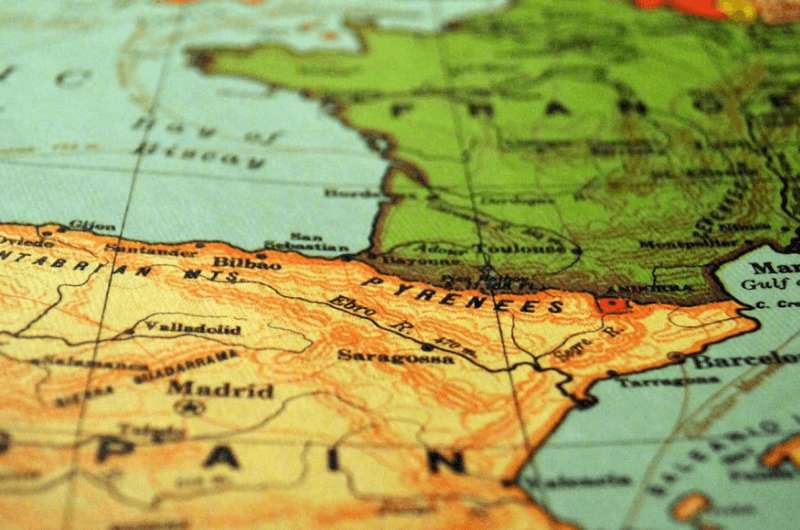
Map of Spain
There was a couple of Christian nobles (as in an actual married power couple) – Isabel de Castilla and Fernando de Aragón – that were the leaders of the Catholic bunch. They managed to rid Spain of Muslims and united the entire peninsula. They became known as the Catholic monarchs (Reyes católicos), so pretty on brand. You will find a lot of statues and important avenues named after them throughout the entire country.
It was a huge success after all the centuries, which goes to show just how capable the two were. Although, to be fair, it was mainly Isabel’s doing, as Fernando was busy finding lovers and then sending them off to monasteries once he was done with them. And since Isabel was doing so well, she decided that the peninsula was not enough, and hired Columbus for a mission. The rest is history.
Apart from America, Spain explored the western coast of Africa and, while they were there, conquered the Canary Islands (whose name is derived from the word canis, which refers to the many dogs that were living there).
As impressive as that sounds, there was a darker side to Isabel’s success. Unifying a country under a religion (in this case Christianity) means that there is no place for anyone else. So the Jews and any leftover Muslims had to convert to Christianity or leave, and a special religious inquisition tribunal was founded. This being the Middle Ages, they didn’t talk about religion respectably behind a desk. They tortured and persecuted. The overall atmosphere in the country was full of suspicion and unease. What a lovely time to be alive!
During the centuries that followed, the Habsburgs (not those guys again!) got to the throne, and Spain really focused on the conquest of their newly discovered continent – America. Spain was on a roll and was Europe’s predominant power in the 16th and 17th centuries. But what began as a sign of progress of the country essentially became its demise, as it got harder and harder to manage an empire on which the sun never sets.
By 1700, the country is in a state of grave decline, even losing Portugal which, until 1668, was of one of Spain’s provinces. The War of the Spanish Succession resulted in Spain losing all of its European possessions outside the Iberian Peninsula.
Cue the reign of the Bourbon dynasty, originally from France. The 18th and 19th century saw the country focused on fighting the decline after the incapable reign of the last Habsburgs, then fighting against Napoleon, and then regaining its footing following Napoleon’s short occupation. Just a lot of cleaning up messes really.
Not one to stay out of trouble for long, Spain underwent a Civil War (1936—1939) and followed it up with World War II (1939—1945).
General Franco
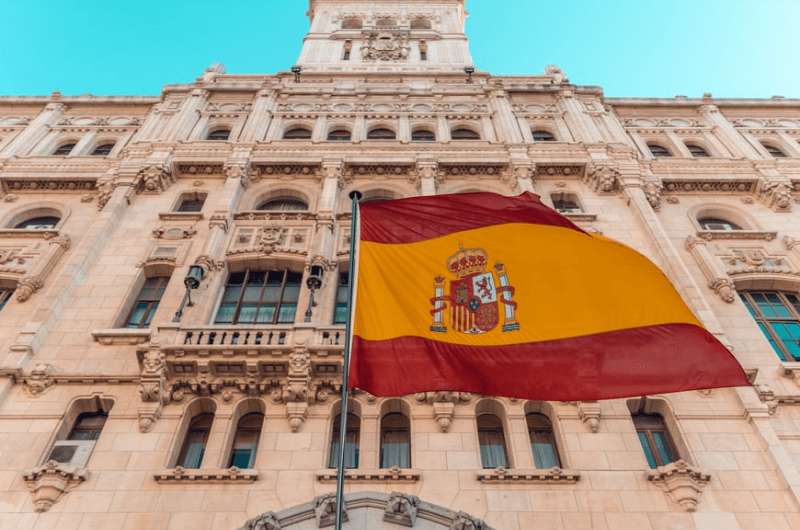
Spanish flag
An infamous spot in the modern history of Spain was the fascist era of franquismo, spreading terror and creating an international separation, which lasted until the death of General Franco in 1975. The dictator promoted the power of the Catholic Church and suppressed regional diversity. The government chose traditions which it declared Spanish and those, and only those, were the ones everyone was supposed to follow. Local languages were banned. People were unhappy, everything sucked.
And finally, after all that madness, Spain got back on track and on its way to a democratic country, renewing ties within Europe and around the globe.
Phew. Who needs a glass of sangria?!
6. History of the Spanish Flag
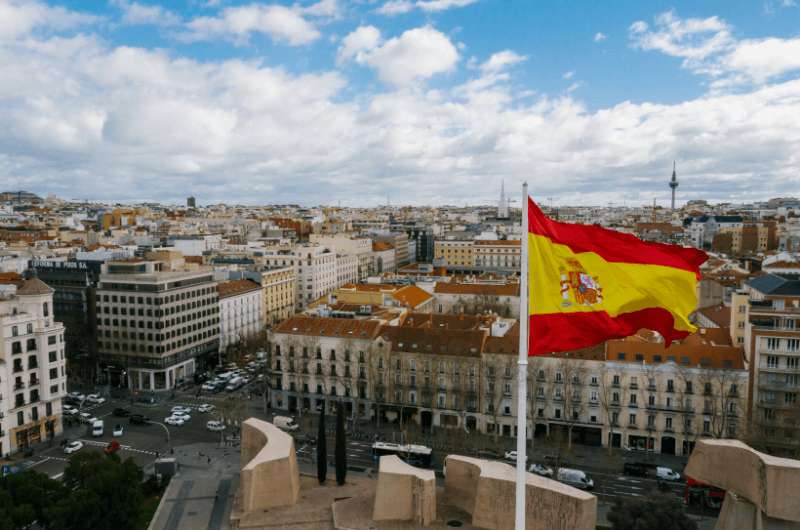
Red, yellow and red
The Spanish flag is made up of three horizontal stripes: red, yellow (gold), red. Spain’s coat of arms is on the middle, yellow, stripe. The colors have no official interpretation, rather just being bold. Just like Spaniards.
The current flag is based on a naval ensign designed by a naval officer of the Spanish Royal Navy, Antonio Valdés y Bazán, in 1785. The officer made a drawing of it and 11 other flags for King Charles III, who wanted a flag that was easily distinguishable from those of other countries. Most flags in those days were white, with just the coat of arms.
The king then chose the red and yellow colors we know today. Interestingly, since it was designed as a naval ensign, its use was very marine-focused until 1820 when the first land unit got their hands on a flag. Then, in 1843, Queen Isabella II made the flag official. The original drawing of all the proposed flags can now be seen in the Naval Museum of Madrid.
Tip: Book a hotel in Madrid and check it out for yourself.
Throughout the centuries, the flag’s colors and general layout has stayed the same, except during the 1930s, when they added purple. Learning that purple is not the new black, Spain quickly went back to just the yellow and red. The coat of arms on the flag changed several times depending on the political situation of the country
7. Language in Spain
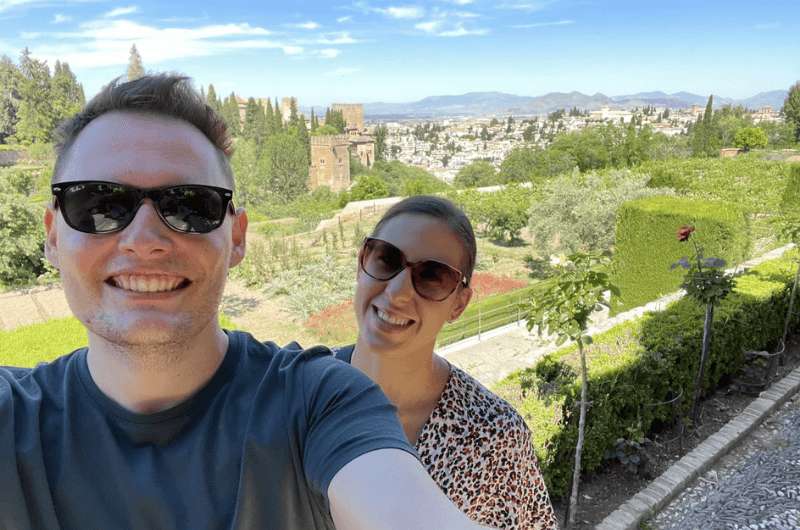
Two non-Spanish-speaking tourists
Spanish is the official language of the country. Don’t expect to use English much. You should definitely try to learn a couple of phrases in Spanish. Or just rely on Google Translate, because there are so many regional differences that sometimes not even bad Spanish will get you very far, since you suck at it anyway. Seriously, they do this thing with their Ds that I just can’t master! You have to talk like you have lazy tongue, and mine's just not lazy enough. And if you can’t roll your Rs, you will be met with blank stares. I can, but those Ds man!
In Barcelona (and Catalonia in general), the first language of most people is Catalan, which is like a mix of Spanish and Italian. In the Basque country, it’s Basque (which is its own language dating back to pre-Roman times, don’t expect to understand it at all). In Galicia, it’s a mix of Spanish and Portuguese. The rest of Spain speaks el castellano, which is what we know as Spanish, however, be prepared for regional nuances and local dialects. Google translate will save the day.
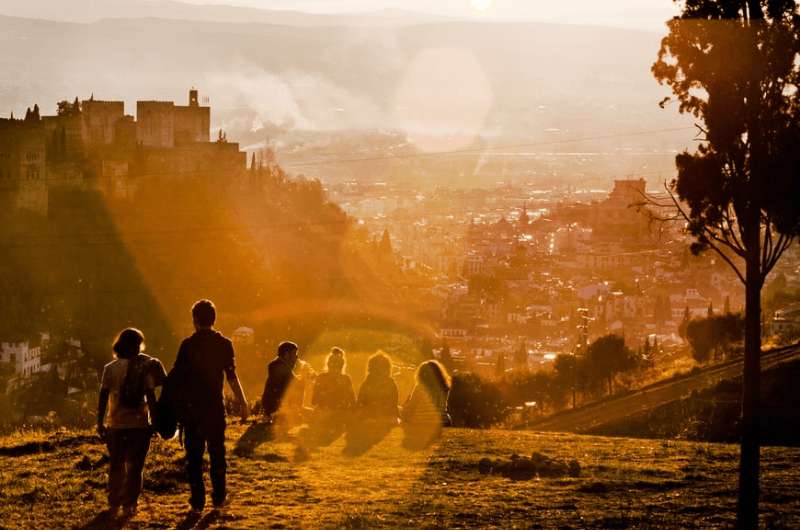
Looking over Granada. A moment of silence in a loud country. Those might be tourists.
In Andalusia, the pace is even faster than the rest of the country, so the first weeks in terms of understanding can be tough even if you do speak Spanish. You just can't catch a break!
If you have ever been to any Spanish-speaking country in Latin America, the Spanish in Andalusia is more similar to this style than the hypercorrect variety spoken for example in Madrid. This of course is not a coincidence, the ships that were leaving for America in the 16th century were departing from Andalusian ports and were full of sailors from this region, so they brought along (apart from deadly diseases – looking at you, Columbus) their vernacular.
8. Religion in Spain
There is no official religion in Spain and religious freedom is guaranteed, though the majority of the population still identifies as Catholic, and is loud and proud about it. Ever since Franco, the dictator that wanted to force Catholicism on everybody, the role of religion in society has been significantly declining. This is mostly true of the younger generations and city folks.
The more towards the south you go, the more you will see people going to church on Sundays. You can see families dressed up in their Sunday best, with little children looking like royalty, hair gel and all.
What do get when you combine Spanish enthusiasm and Catholicism? Big religious celebrations! The most important one is Holy Week, or Semana Santa, the week preceding Easter. Don’t expect chocolate eggs and colorful bunnies, though, this is the week that Catholics remember Jesus’ death and resurrection. But there is music, parades and costumes! Each town organizes processions, usually one every day of the week in smaller towns and up to 6 a day in places like Granada. Men in costume carry huge floats that represent different stages of Jesus’ last week.
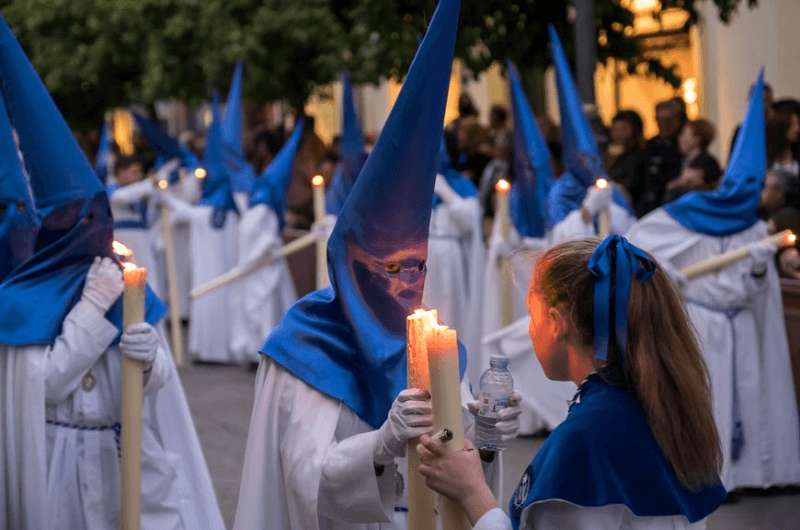
Santa Semana celebrations...not those other people that you instantly thought of!
So this can be quite a solemn affair, though with Spaniards congregating all over the place, you are bound to see people enjoying themselves. Like the children, who, every time the men carrying floats take a minute to stop and rest, run up to members of the procession who are holding candles. They then collect the dripping wax from the candles into a ball of wax and have competitions amongst each other to see who can make the biggest one. Now that’s a celebration!
Fun fact: One of the most eye-catching costumes you will come across are silky robes with tall, pointy hoods covering the wearers’ heads and faces, looking a whole lot like KKK members. As you might’ve guessed, they don’t have anything in common, and the capirotes are meant to symbolize penance. During the Spanish inquisition, offenders were made to wear a paper cone on their heads with a symbol of whatever crime they were supposed to have committed. Today, they are worn as a way to show they are penitents as well. Different religious brotherhoods have different colors and designs of the costume.
9. People of Spain
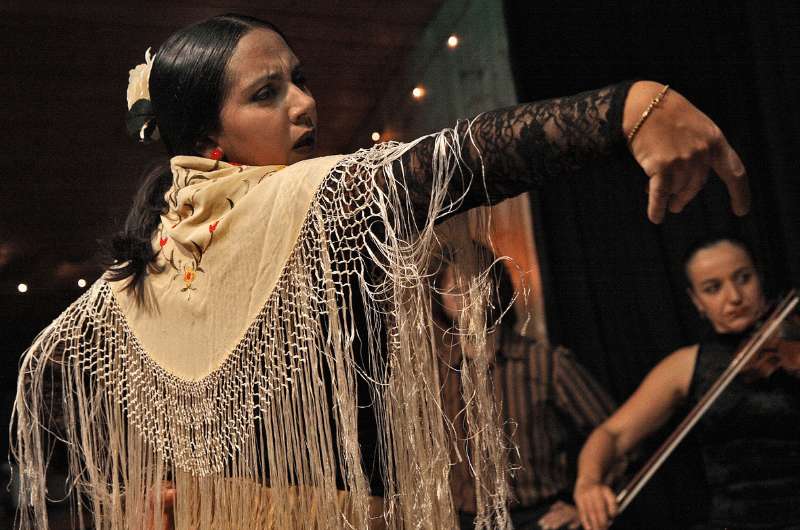
Flamenco!
What are Spaniards like? I bet you the first adjective that comes to mind once you finally meet them is: loud! But also friendly, spontaneous, intense, enthusiastic. Did I mention loud? Also, very proud and, due to all the noise and general temperament, also come off as confident.
That personal bubble we all have and like to keep clear of other humans? It’s minimal in Spain. Personal space is not a thing. Being smashed up in someone’s face during a conversation – normal. Being touched or grabbed while talking – absolutely expected! Uncomfortably long eye contact? Yes! You’re in Spain!
Also, everything is a family affair. All generations hang out together, and seeing a kid sleeping at a bar at 11pm is nothing unusual. Bars are more like a café/bar hybrid in Spain. You can eat breakfast at one as well as stay for some wine in the evening. It’s a family place where nobody will bat an eye at a breastfeeding momma.
This is also indicative of the late-night culture. Since a day in the life of a Spaniard is organized around siesta time, everything is moved more into the evening. Siesta, a 2 or 3 hour break in the middle of the day, is traditionally worked even into business hours. Many businesses close from about 2—5pm, with some restaurants even staying closed until dinnertime finally rolls around at about 9pm. Bars and restaurants usually start their siesta later, at around 4pm, because people gotta eat lunch!
A standard workday is from 9am—8pm with a siesta in the afternoon. During this time, people either go home and actually rest or nap, but, especially in larger cities, they congregate at bars and chill there until part 2 of the work day starts. By the time they have dinner at 10pm and talk talk talk, going to bed at 3am is standard. Spain is a sleep-deprived country for sure.
10. Culture in Spain
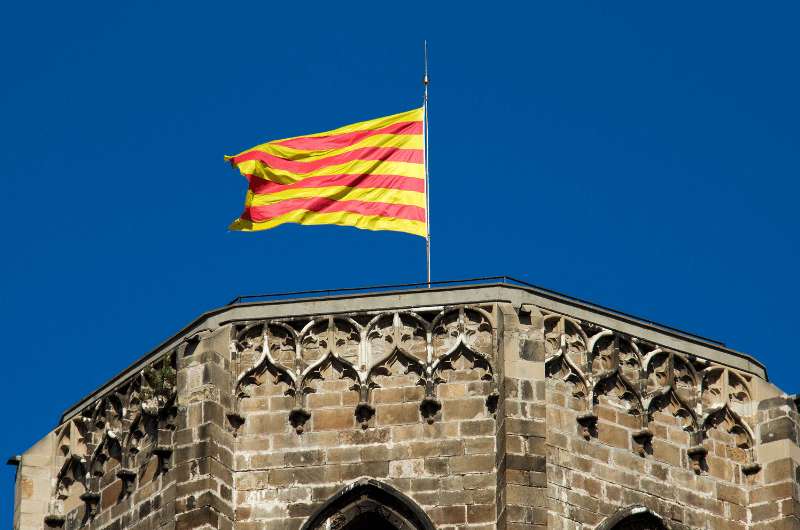
This flag is Catalan
Each region of Spain has its own traditions, language, and usually a strong local identity. While many Spaniards have a strong sense of national pride, many have an even stronger sense of local pride. For example, in Catalonia, the region around Barcelona, over a third of the people speak Catalan as their primary language. You will also see more local flags flown than Spanish ones, with many people even saying they do not feel Spanish at all. They are simply Catalonian.
In 2017, Catalonia held a referendum in which 90% of the participants (of which, admittedly, there weren’t that many) voted for independence from Spain. They Catalonian government then announced its independence, only to get struck down as unconstitutional. Catalonia is forever stuck as part of Spain. Or until another round on hot potato starts.
Bullfighting has been a thing in Spain for so long, not even the Spanish know why anymore. This “fun” tradition is definitely a divisive issue, and the younger generations mostly oppose it or don’t care for it. Some, citing national tradition, are still in favor, and bullfighting still is legal. There is a bullfighting arena in every larger town, but many aren’t used for their original purpose anymore, mostly becoming concert halls, event venues, or museums.
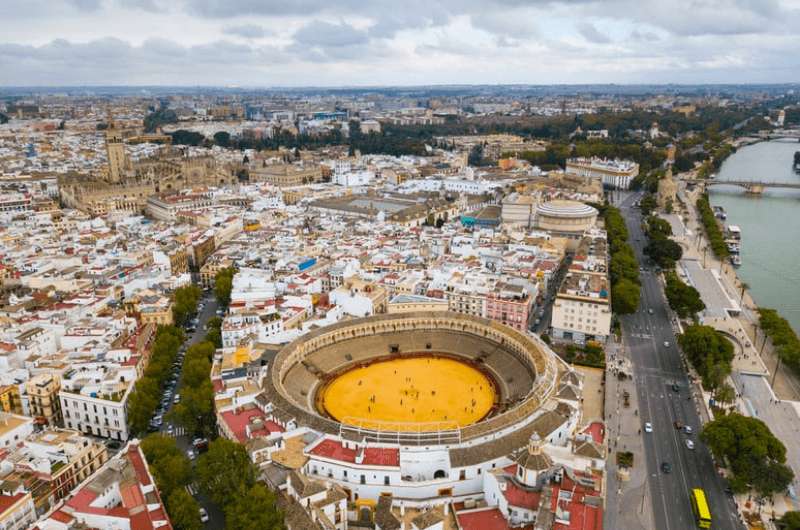
Bull arena in Sevilla
The one in Barcelona was famously turned into a shopping mall in 2011 after the local government banned bullfighting in Catalonia in 2010, though it hadn’t held a bull fight since 1977! Then, in 2016, Spain’s Constitutional Court overturned the ban, saying that the local government overstepped its authority and that bullfighting is part of Spain’s heritage. Still, Catalonia has maintained its stance and there have been no bullfights in the region since the original ban.
To find out all about bullfighting and understand why the heck they like torturing bulls while wearing fancy clothes, visit an arena and go for a tour. We did a great one in Granada and Ronda.
Flamenco is considered to be typically Spanish by many foreigners. General Franco even tried to make it a Spanish tradition during his dictator years, but the fact is that it is mainly popular in the region where it originated: Andalusia. This dance/performance is a very dramatic and emotional show, with lots of clapping of hand and stomping of feet. Just like your typical conversation with Spaniard really. It's accompanied by guitar music and singing. Sometimes a show is just of guitar music, so make sure what you are signing up for.
The best shows are the ones you won’t find online, in small rooms or caves (cuevas) around Andalusia. If you want to have a very in-your-face experience, that is what to look for. Look out for flyers or ask in local bars for information on shows. And take a tissue to wipe sweat off your face (not your sweat, mind you).
11. Holidays and festivals in Spain
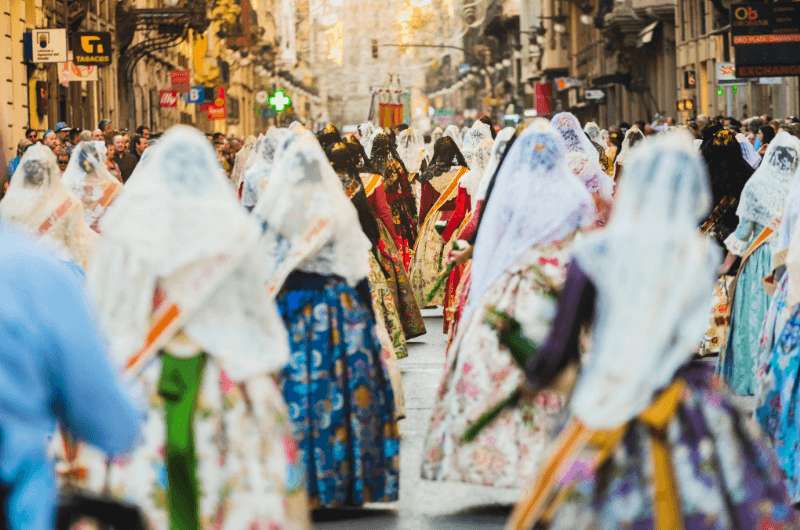
Las Fallas
Spain is always up for a celebration. No matter when you visit, you can find a holiday being celebrated in one place or another.
Many of Spain’s big events are religious, since Spain is a traditionally Catholic country. But even so, don’t picture a quiet, solemn event. This is Spain! Everything is always fun! And loud! And colorful!
Semana Santa
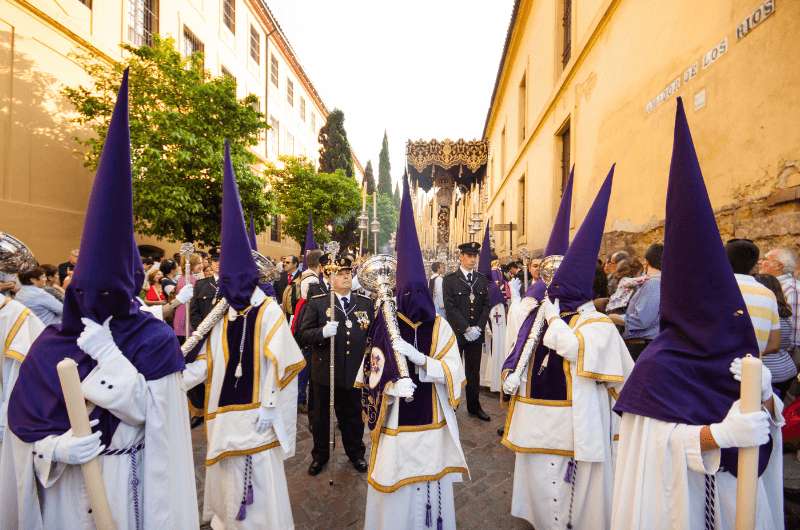
The Saint Week aka Semana Santa
The most important event in Spain is Holy Week, or Semana Santa, the week preceding Easter. This is the week that Catholics remember Jesus’ death and resurrection. Each town organizes processions where men in costume carry huge floats that represent different stages of Jesus’ last week.
This is a big one all across the country, but if you want to experience the most magical atmosphere, head down south to Andalusia. Malaga, Granada and Sevilla are the places to be if you want to experience the biggest Santa Semana celebrations.
Día de Santiago
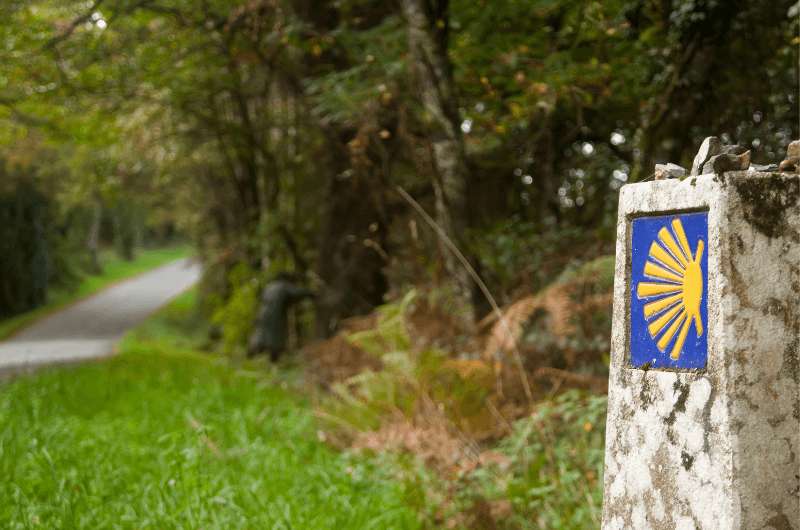
Everybody heard of Camino de Santiago
St. James, the patron saint of Spain, of course has his own holiday. It is celebrated on July 25th in Galicia, the region in Spain’s northwest corner. James is Santiago in Spanish, which is why the celebration is called Día de Santiago. This is a public holiday in Galicia, but you can bet your boots that there are many events in the two weeks leading up to this day, including parades with floats, costumes, and fireworks.
Santiago de Compostela is where St. James’ remains are buried, and the town has attracted pilgrims ever since the Middle Ages. The Camino de Santiago, or Way of St James, is a famous trekking route that spans hundreds of kilometers. For St. James’s Day, over 100,000 people walk 100 km or cycle 200 km of the Camino in order to receive the official recognition of the Pilgrim’s Office.
Las Fallas Festival
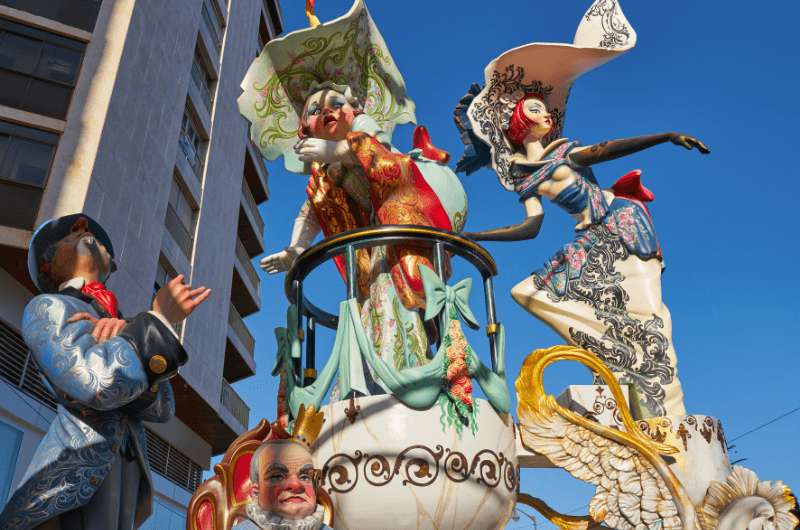
Las Fallas Festival
Over on the eastern coast of Spain, in Valencia, there is the bombastic Las Fallas Festival. On March 15-17 each year, Valencia turns into a colorful and super noisy, but also traditional and meaningful, craze. Even UNESCO thinks it is worth your time.
Las Fallas comes from an old carpenter’s tradition. They would celebrate the arrival of spring by burning wood used to hold their lights during the winter. Nowadays you get hundreds of finely crafted cartoony statues, or fallas, set up around the wider center of Valencia every year. They’re made from cardboard and papier-mâché and are all burnt down at the end of the festival. This comes after three days of fireworks, firecrackers and parades.
Tip: Book a hotel in Valencia just in time for the Las Fallas Festival.
La Tomatina
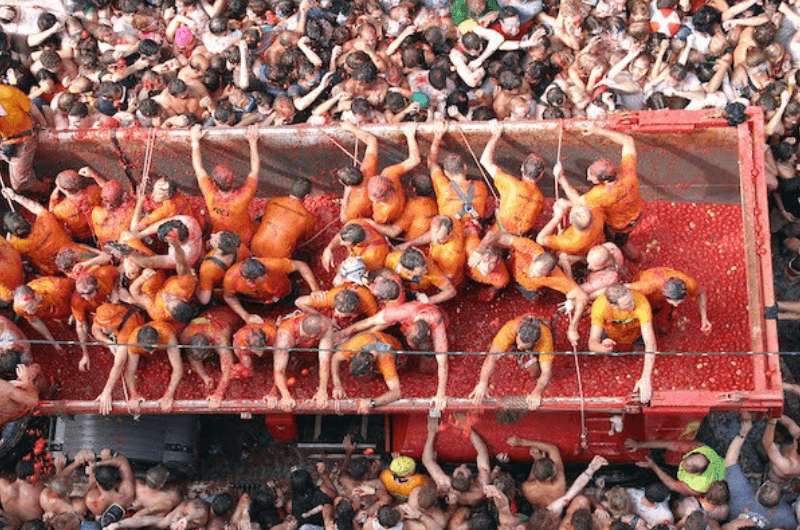
For me, it does not look very attractive...
If you’d rather throw tomatoes at everyone around you and end up looking like you showered in ketchup, head on over to La Tomatina. It happens in Buñol, a town in Valencia, and starts with a nice breakfast in the main square. Then, people try to climb up a soaped-up pole to get their hands on a leg of ham, all while having buckets of water dumped on them from the surrounding balconies.
Finally, the tomato trucks arrive, and all hell breaks loose. One hour of vegetable war resulting in everything and everyone covered in tomatoes. Firetrucks then come and clean everything, with locals providing hoses out their windows for the participants to clean off with.
This celebration is purely for entertainment, there is no holy person this is trying to be a tribute to.
12. Famous Spaniards

Spanish celebrities
Quite a few Spaniards, thanks to their vivacious nature and overall electric attitudes, have become well known around the world. Not all countries can make that claim. Even if you are from another continent, you have definitely heard of some famous Spanish people.
Hollywood loves Penelope Cruz, Javier Bardem and Antonio Banderas. No need to Google them, you know them, right? From the music world, Enrique Iglesias might ring a bell.
What about sports? What about the annoyingly successful tennis player Rafael Nadal? If you follow motorsports, you know Fernando Alonso from Formula One and the youngest rider to ever win Moto GP, Marc Márquez. With football (that’s soccer for you American folks) being the most popular sport in Spain, there have to be some famous Spanish football players, right? Right. For instance, Xavi is so popular he doesn’t even need to use his full name! That would be Xavier Hernández Creus.
If we look into the past, Spain has been the birthplace of some of the biggest names in the art world. Pablo Picasso, Francisco Goya, Antoni Gaudí and Salvador Dalí all hail from Spain.
13. Food in Spain
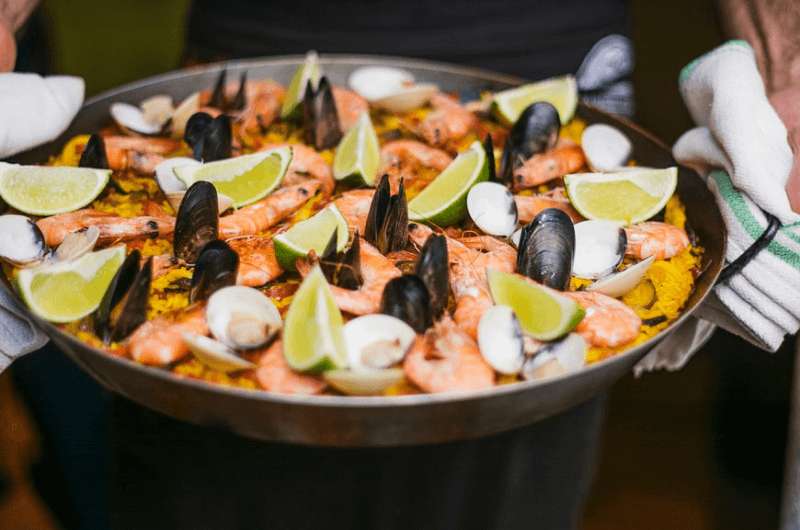
Paella, anyone?
When thinking of Spanish food, remember that vegetables, meat and fish are consumed on a regular basis. Spaniards love food, and lunch and dinner is often used as a social affair after which they love to engage in sobremesa, table talk. If you are ever invited for dinner, don’t expect to leave after the meal! The eating is just the first step! Expect hours of conversation afterwards.
Spain is the world’s largest producer of olive oil, and you will find it heavily used in all dishes. Garlic also finds its way into everything. Commonly used herbs are parsley, oregano, thyme and rosemary.
The Spanish breakfast is often light (at least compared to US standards), with a sweet roll with jam or a toast with cheese, accompanied by a (gross) coffee with milk.
Since lunch is usually a few hours after noon, Spaniards stave off hunger by eating small snacks mid-morning.
Lunch has several courses, typically a soup, salad, fish or meat main course and dessert as a standard. You might even get tapas as a starter.
In the afternoon, you have la merienda, a coffee and something sweet or even a sandwich. This is again because dinner doesn’t start until 9pm, with 11pm still being a totally accepted time to eat your last meal of the day!
Dinner consists of a smaller and less fancy meal and a dessert.
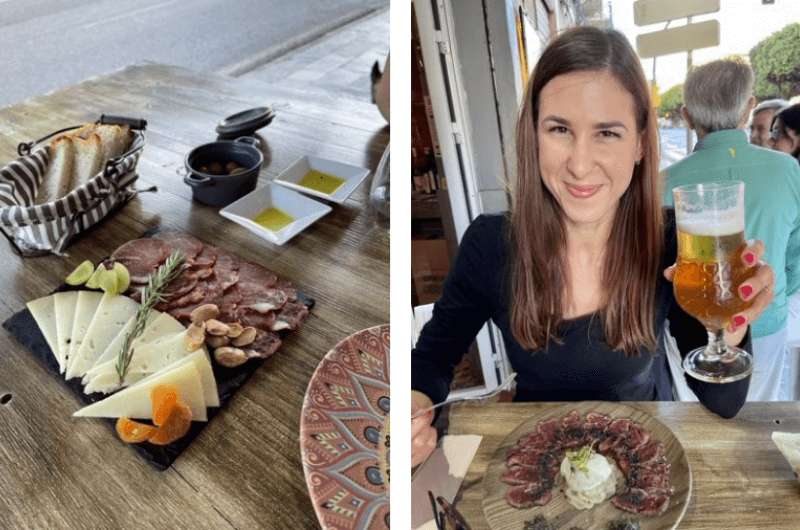
Karin enjoying her tapas and beer
Here are some staples:
- Jamón Serrano – Cured pork ham.
- Chorizo – A fermented, cured, smoked sausage that can be eaten either without cooking or added to a dish as an ingredient.
- Tortilla de patatas – A fat omelette with potatoes, often served at room temperature as a tapa. You can buy it in the supermarket for 1 EUR. The entire country is divided on whether it should contain onions or not.
- Paella – A rice dish with either fish or chicken or rabbit meat (or sometimes a mix of both fish and meat), and sometimes vegetables. It gets its yellow color from the saffron used in it. It is considered typically Spanish, though it originates from the region of Valencia. Most Spaniards will consider it a dish from Valencia rather than a Spanish dish.
- Bocadillos – A sandwich made from a baguette or other similar, long bread. It is filled with some sort of chorizo, jamon, cheese, and a sauce like mayonnaise or tomato salsa. If you´re looking for something small to eat, you will find bocadillos everywhere.
- Tapas – Basically a tiny portion of food. Can be eaten as an appetizer, snack, or, when combined, eaten as a full meal. We have a whole post about tapas you can check out.
- Churros – A fried dough pastry covered in cinnamon sugar, often eaten with a hot chocolate. Some people hate it but I am not one of those people.
Tip: Tapas are usually free when you buy in Granada! Book a hotel in Granada and fill your belly!
A note on coffee:
The coffee is really disgusting and pretty much undrinkable in Spain. If you are a person that likes to enjoy a flat white or nice filter, consider yourself warned. In Spain you will literally have two options: café solo (black coffee) or café con leche (with milk). That's it. Both options are extremely hot and taste like dirt (or dirt with milk).
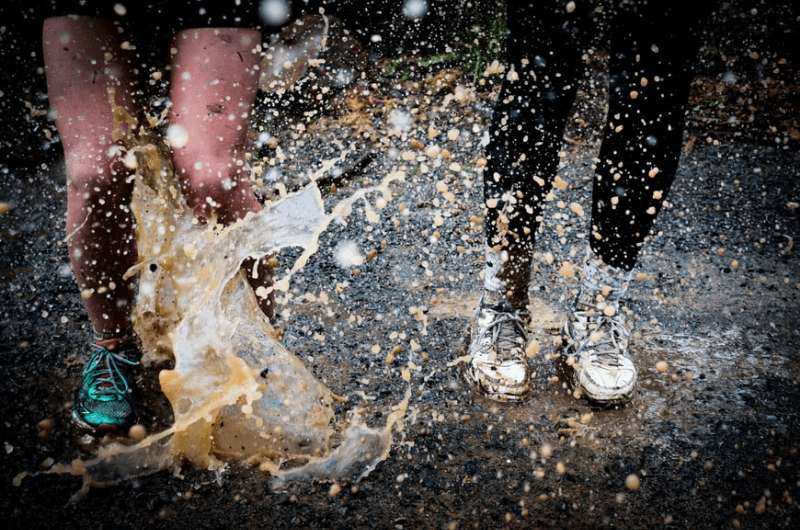
Why are these people jumping around in a puddle of Spanish coffee?!
14. Useful contacts and emergency vocabulary
The emergency phone number for Spain (and the EU in general) is 112. You can call this number from any phone whether you need the police (Policía or Guardia Civil—the civil guard), fire department (Bomberos) or need an ambulance (Ambulancia). The 112 staff speak English.
If you are going to the hospital emergency room, look for Urgencias. If you need medicine, look for a farmacia.
It’s always a good idea to know where your closest embassy or consulate is.
And last but not least, you will probably benefit from the most recent covid information. Spain’s Travel Health Portal is a great place to see what the current travel restrictions are. For more covid-related resources and details on all the entry requirements, see our detailed post on the topic.
Alright, you are now pretty much an expert on Spain! You won’t be surprised by the receptionist that touches your arm during check-in, won’t be caught dead with a 100 Euro bill and won’t think that the Ku Klux Klan is invading before Easter.
This post may contain affiliate links. We earn a small commission if you make bookings through my links, at no additional cost to you. This helps us keep this blog free, thank you!


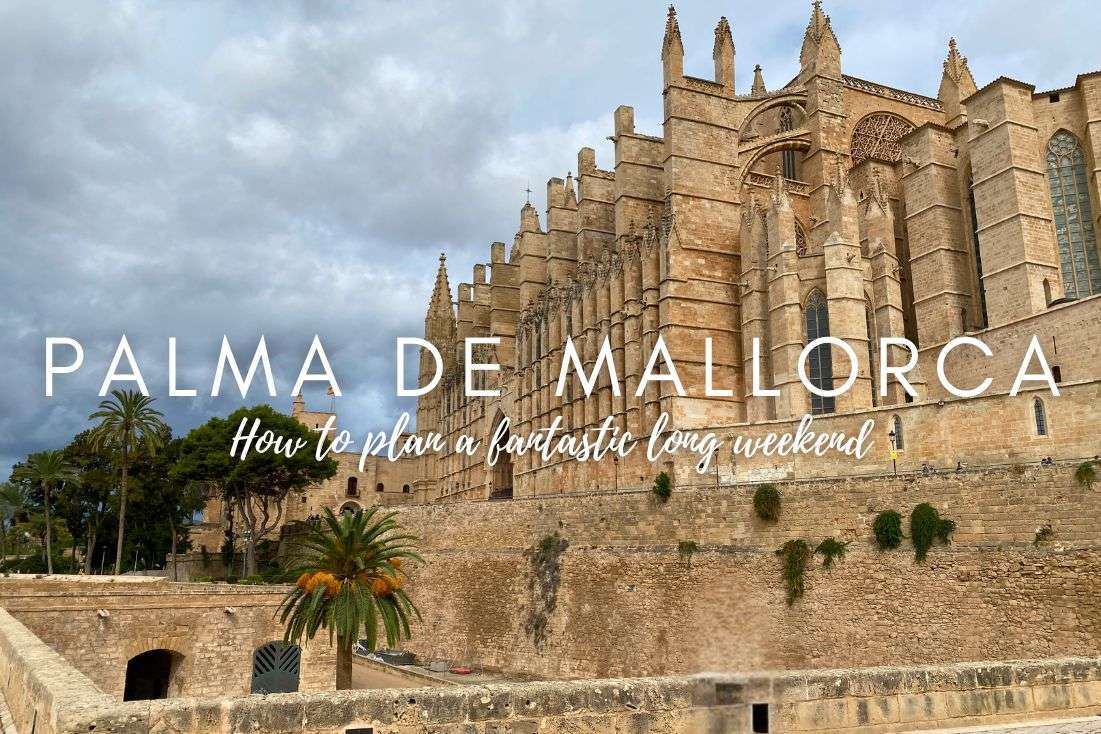
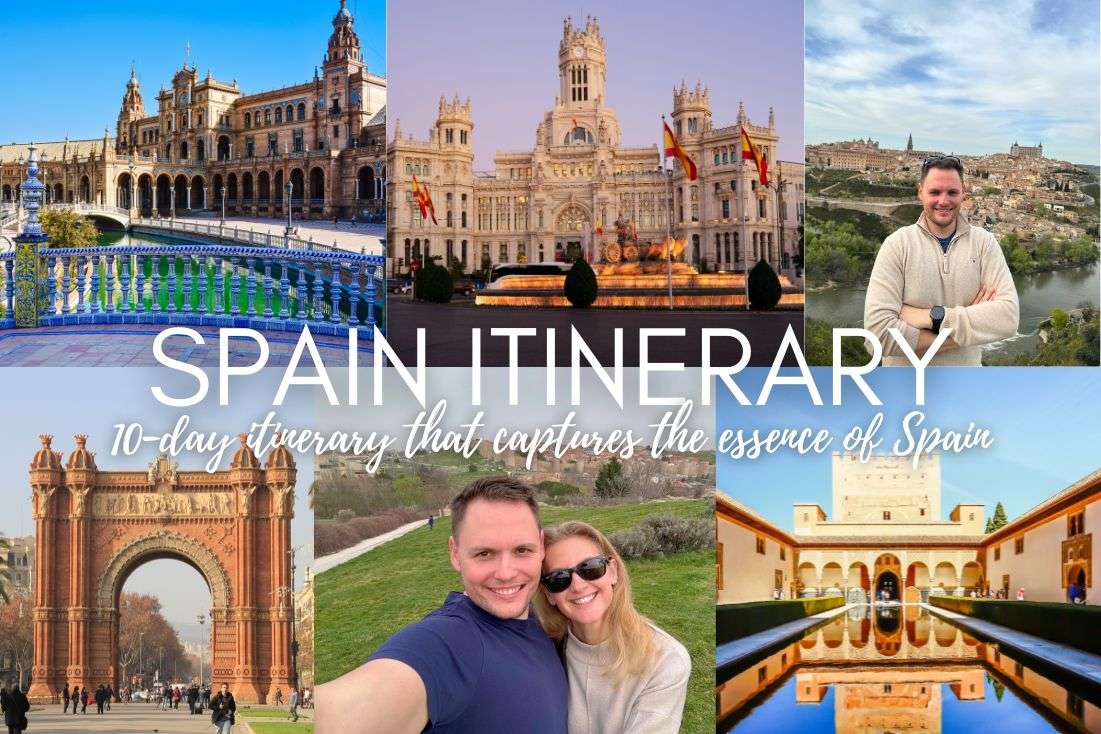
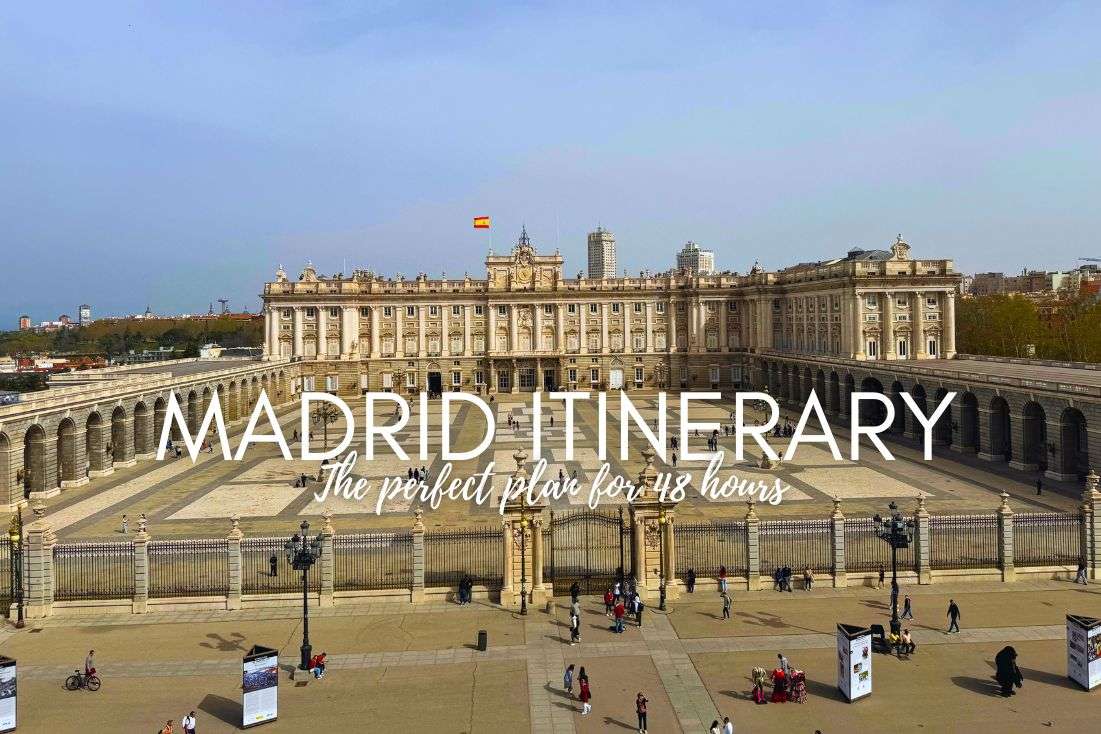





Comments | Thoughts? Give us a shout!